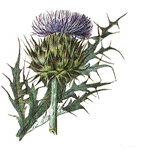Papers in the Biological Sciences
Date of this Version
1982
Abstract
Although predispersal seed predation by insects is common, no test exists of its effect on plant recruitment. This study examines seed predation in the population dynamics of a native, temperate shrub, Haplopappus squarrosus H. and A. (Asteraceae), over an elevational gradient in the coastal sage scrub vegetation of San Diego County, California, USA. Frequency and abundance of H. squarrosus increase from coast to mountains. Expected abundance, based on flowers initiated, was highest at the coast and lowest in the interior, the opposite of the observed adult plant distribution. Overall flower and seed predation by insects was high (44-73%) and was greatest at the coast. Insect exclusion experiments at sites along the gradient had three main results. (1) Seedling recruitment was proportional to the number of viable seeds after seed predation. The exclusion plots had significantly higher numbers of seedlings established at all sites than did control plots; the greatest increase was at the coast. (2) Seedling survivorship was independent of both seedling and adult densities. (3) Juvenile recruitment was proportional to seedling establishment. Predation by insects prior to release of seeds played a critical role in the population recruitment of H. squarrosus within and among sites along the gradient. Survivorship of established plants, in addition, was as high at the coast as it was in the interior. These results suggest that indigenous insect seed predators can be a major force controlling the dynamics of a native plant species over its natural distributional range.


Comments
Published in Ecological Monographs 52:1 (1982), pp. 25-41. Copyright 1982 by the Ecological Society of America. Used by permission.